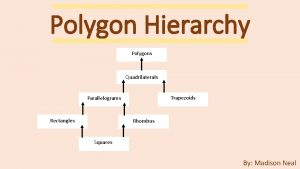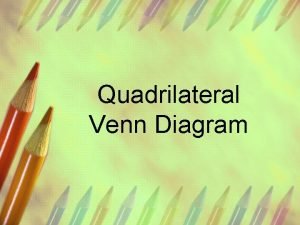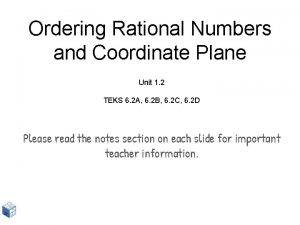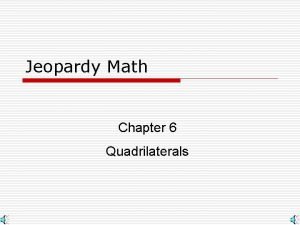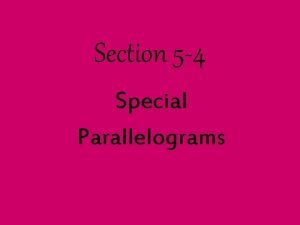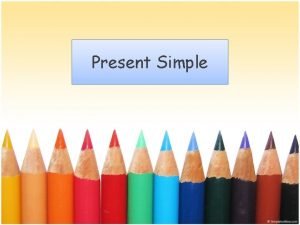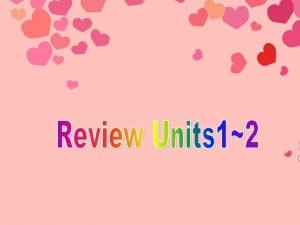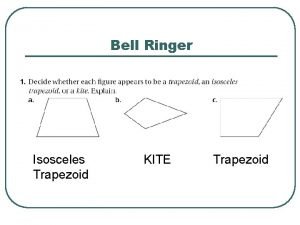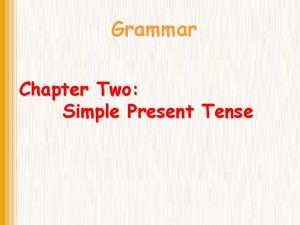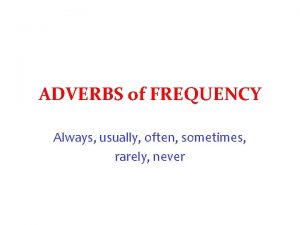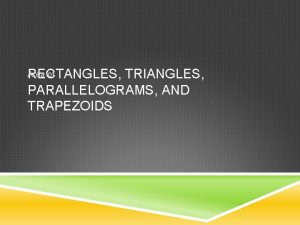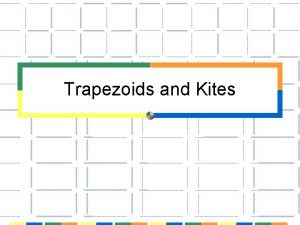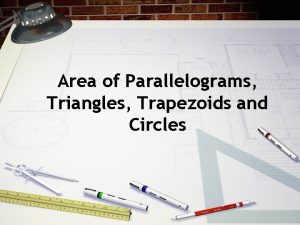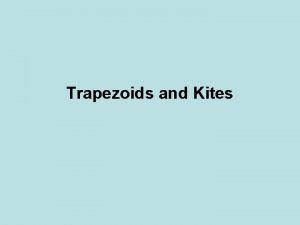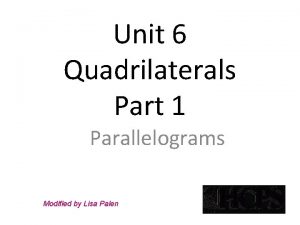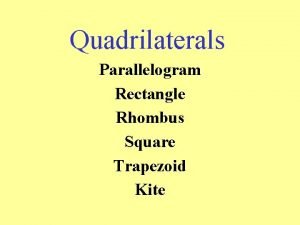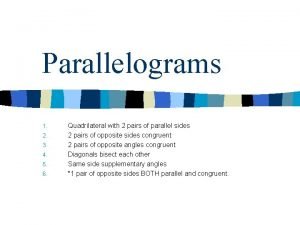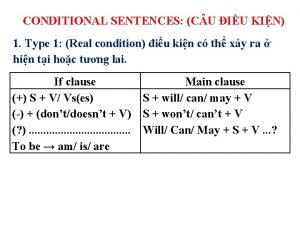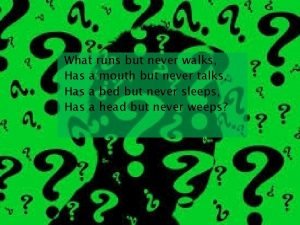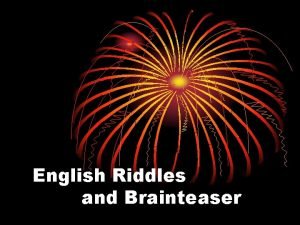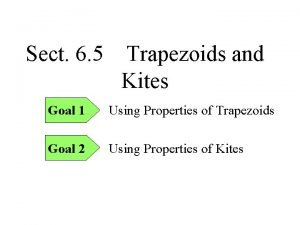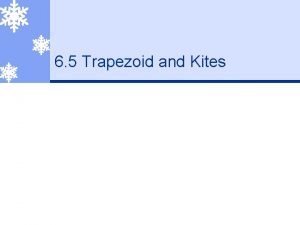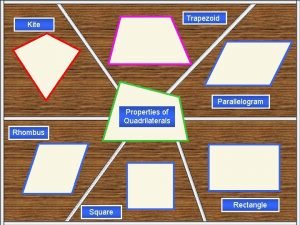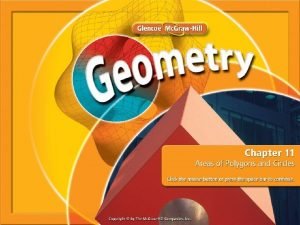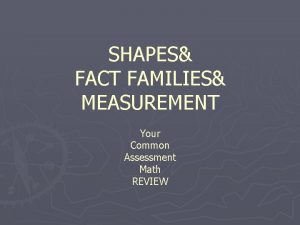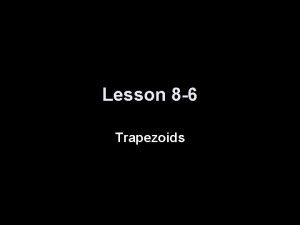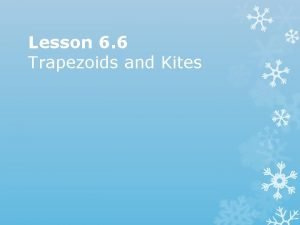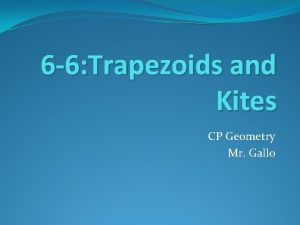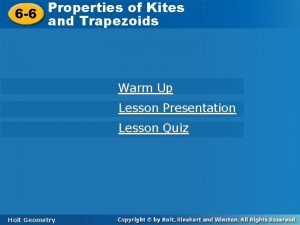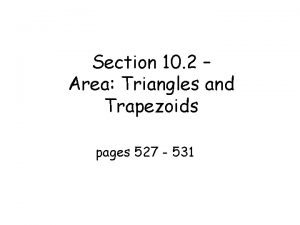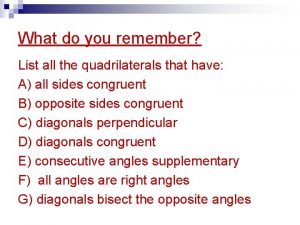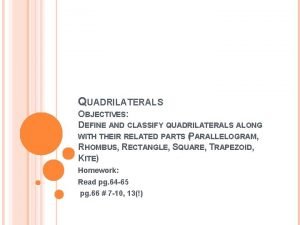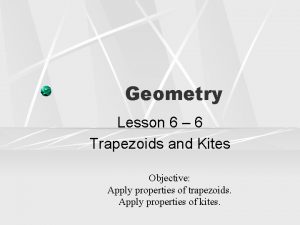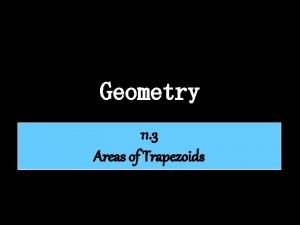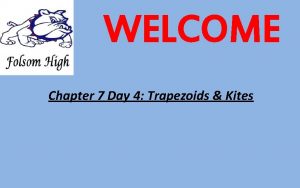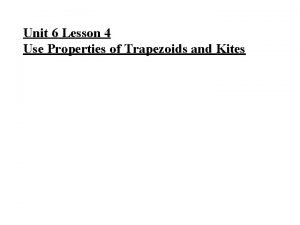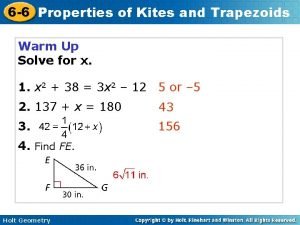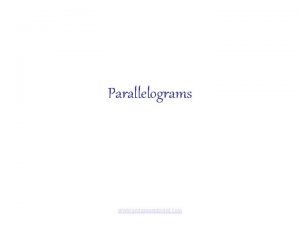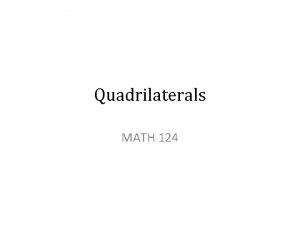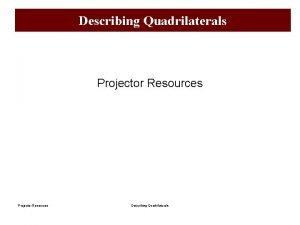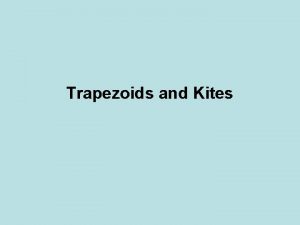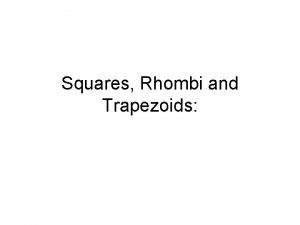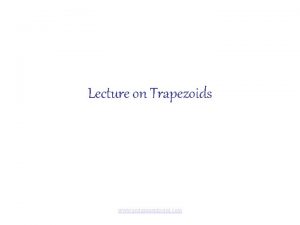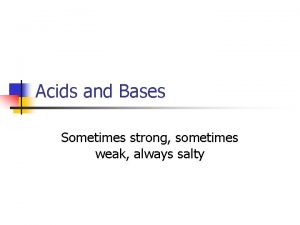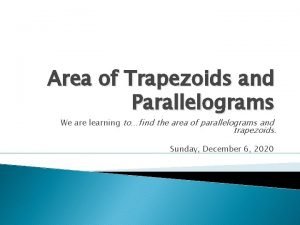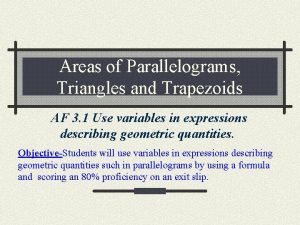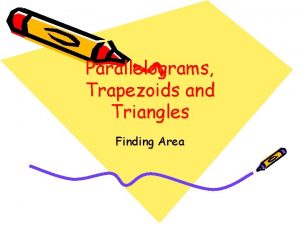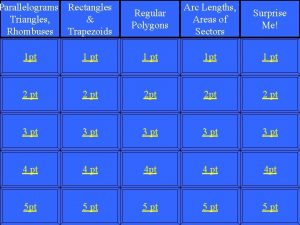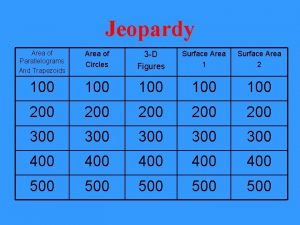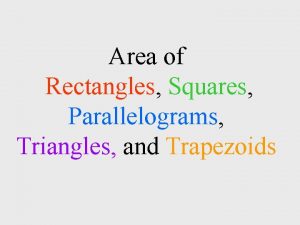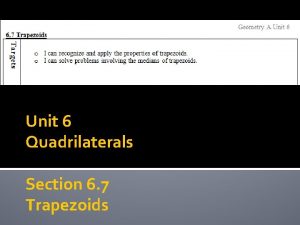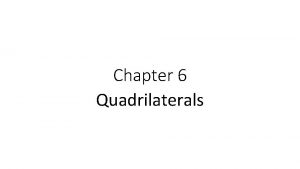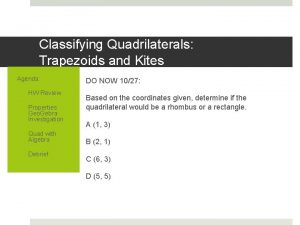Parallelograms Quadrilaterals Definitions Trapezoids Always Sometimes Never 1



















































- Slides: 51

Parallelograms Quadrilaterals Definitions Trapezoids Always Sometimes Never 1 pt 1 pt 2 pt 2 pt 3 pt 3 pt 4 pt 4 pt 5 pt 5 pt

1 pt What is the sum of the interior angles of a quadrilateral?

1 pt Answer: 360 Degrees

2 pt What is true about consecutive angles of a rhombus?

2 pt Answer: They are SUPPLEMENTARY

3 pt What is the equation used to find the length of a median of a trapezoid?

3 pt Answer:

4 pt What is a quadrilateral called with congruent diagonals that are not perpendicular?

4 pt Answer: RECTANGLE

5 pt What is a quadrilateral called with diagonals that are angle bisectors but they are not congruent?

5 pt Answer: A Rhombus

1 pt What are four of the five properties of a parallelogram?

Answer: 1. Opposite sides are parallel 2. Opposite sides are congruent 3. Opposite angles are congruent 4. Diagonals bisect one another 5. Consecutive angles are supplementary 1 pt

2 pt What type of parallelogram ALWAYS has the following property? (you may have more than one answer) Diagonals bisect each other

2 pt Answer: Parallelogram, Rectangle, Rhombus, and Square

3 pt The perimeter of a rectangle is 40 cm. The length is 4 cm longer than the width. What are the measures of the length and the width?

3 pt Answer: Width=8 cm Length=12 cm

4 pt What is the length of the diagonal of a square who’s area is 100 square inches?

4 pt Answer: inches or 14. 14 inches

5 pt The perimeter of the rhombus is 128 inches. One diagonal is 30 inches. Find the length of the other diagonal.

5 pt Answer: Approx. 56. 6 inches

1 pt How is a rhombus different from a parallelogram?

1 pt Answer: A rhombus always has four congruent sides. And, its diagonals are perpendicular to each other and they are angle bisectors.

2 pt Can a rectangle ever be a rhombus? Why or why not?

2 pt Answer: Yes because a SQUARE has the properties of both a rectangle and a rhombus.

3 pt What makes a trapezoid different from a parallelogram?

3 pt Answer: A trapezoid has only one set of parallel sides.

4 pt What type of quadrilaterals will always have congruent diagonals?

4 pt Answer: Rectangles and squares

5 pt The vertices of a quadrilateral are located at (10, 4), (10, 8), (-4, 8), and ( -4, 4) in this order. Is this a parallelogram, rectangle, rhombus, or a square? Please be as specific as possible.

5 pt Answer: It is a parallelogram and a rectangle

1 pt What is true about the angles in a trapezoid that share a leg?

1 pt Answer: They are supplementary

2 pt What are the congruent sides called in an isosceles trapezoid?

2 pt Answer: Legs

3 pt One of the bases of a trapezoid is 15 ft long. The other base is 28 ft long. How long is the median?

3 pt Answer: 21. 5 ft

4 pt The median of a trapezoid is 31 inches long. One of the bases is 17 inches long. How long is the other base?

4 pt Answer: 45 inches

5 pt ABCD is a trapezoid with a median EX. EX=x+5 and CD+AB=4 x+6. How long is the median?

5 pt Answer: 7

1 pt A square is a parallelogram.

1 pt Answer: ALWAYS

2 pt Consecutive angles of a rectangle are supplementary.

2 pt Answer: ALWAYS

3 pt The diagonals of a rectangle are angle bisectors.

3 pt Answer: SOMETIMES

4 pt A quadrilateral has only two right angles.

4 pt Answer: SOMETIMES

5 pt A rhombus has consecutive sides that are perpendicular.

5 pt Answer: Sometimes
 Hierarchy of parallelograms
Hierarchy of parallelograms Venn diagram trapezoid and parallelogram
Venn diagram trapezoid and parallelogram Trapezoids are never parallelograms venn diagram
Trapezoids are never parallelograms venn diagram George wrote an integer
George wrote an integer Classifying quadrilaterals jeopardy
Classifying quadrilaterals jeopardy Is a square always sometimes or never a rhombus
Is a square always sometimes or never a rhombus Always often sometimes never
Always often sometimes never Always usually often sometimes never present simple
Always usually often sometimes never present simple Always often sometimes hardly ever never
Always often sometimes hardly ever never A kite is a square always sometimes never
A kite is a square always sometimes never S es simple present
S es simple present Geometry review quiz 5
Geometry review quiz 5 Usually always often
Usually always often Area rectangles triangles parallelograms trapezoids
Area rectangles triangles parallelograms trapezoids Trapezoids and kites
Trapezoids and kites Area of parallelograms triangles and trapezoids
Area of parallelograms triangles and trapezoids 6-5 trapezoids and kites
6-5 trapezoids and kites Rhombus proofs
Rhombus proofs What are the 4 properties of a quadrilateral?
What are the 4 properties of a quadrilateral? Are all squares rhombuses
Are all squares rhombuses Sometimes you win some
Sometimes you win some They say sometimes you win some
They say sometimes you win some Sometimes sweet sometimes sour
Sometimes sweet sometimes sour Sometimes cold sometimes hot
Sometimes cold sometimes hot He never polishes his shoes so he never looks smart
He never polishes his shoes so he never looks smart Your love never fails you never give up on me
Your love never fails you never give up on me God never fails meaning
God never fails meaning We are never never weary
We are never never weary What runs but never walks
What runs but never walks If we had more rain our crops would grow faster
If we had more rain our crops would grow faster Implicit memory ap psychology definition
Implicit memory ap psychology definition Canyouunit
Canyouunit Never assume always ask
Never assume always ask God hath not promised
God hath not promised Always low prices always
Always low prices always Find ac
Find ac Lesson 6-5 trapezoids and kites
Lesson 6-5 trapezoids and kites Kite rotational symmetry
Kite rotational symmetry 11-1 areas of parallelograms
11-1 areas of parallelograms Fact family of 50
Fact family of 50 Notes 6-6 properties of kites and trapezoids answer key
Notes 6-6 properties of kites and trapezoids answer key Unit 2 lesson 6 trapezoids and kites quiz part 1
Unit 2 lesson 6 trapezoids and kites quiz part 1 6-6 trapezoids and kites
6-6 trapezoids and kites Properties of kites
Properties of kites Practice 10-2 area triangles and trapezoids
Practice 10-2 area triangles and trapezoids A midsegment of a trapezoid quizizz
A midsegment of a trapezoid quizizz Quadrilateral family tree with properties
Quadrilateral family tree with properties 6-6 trapezoids and kites
6-6 trapezoids and kites Areas of trapezoids worksheet 11-3
Areas of trapezoids worksheet 11-3 Lesson 15-2 trapezoids
Lesson 15-2 trapezoids 4 properties of a kite
4 properties of a kite Properties of kites and trapezoids
Properties of kites and trapezoids
